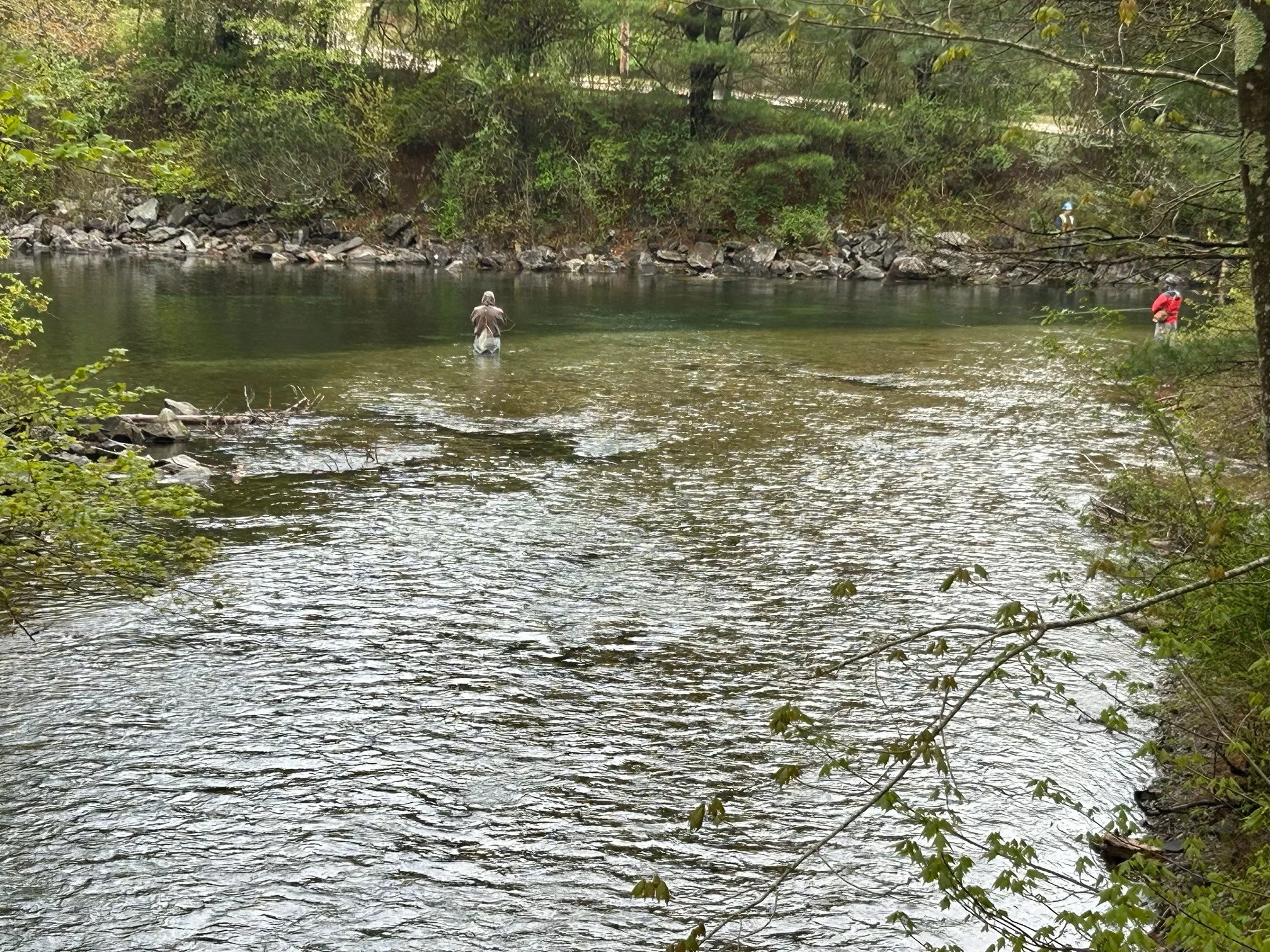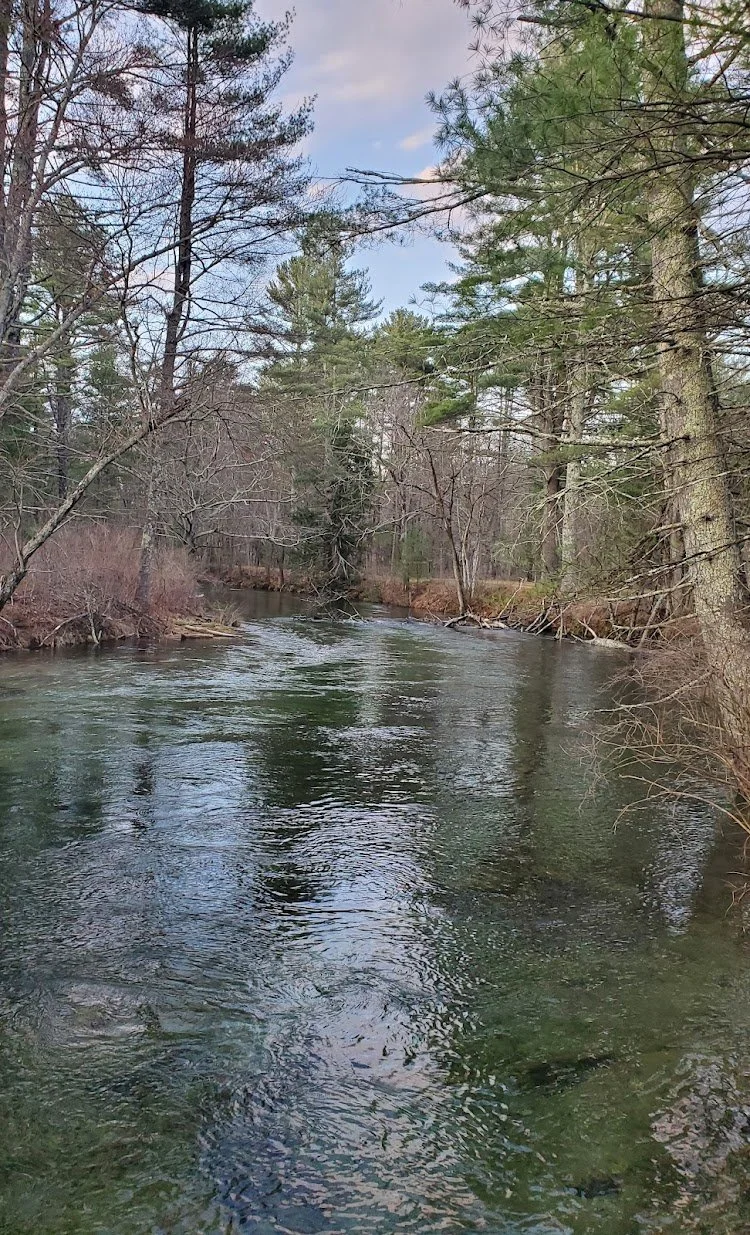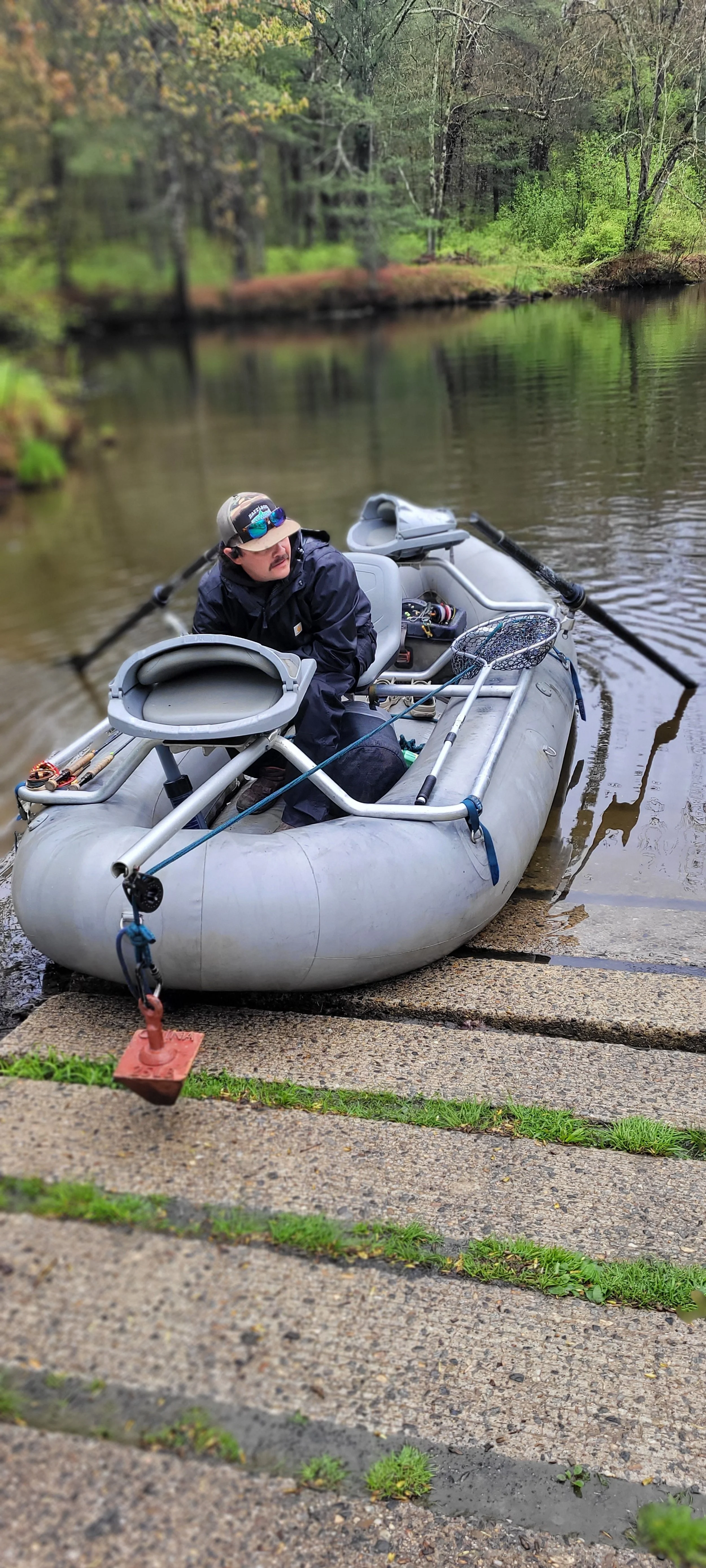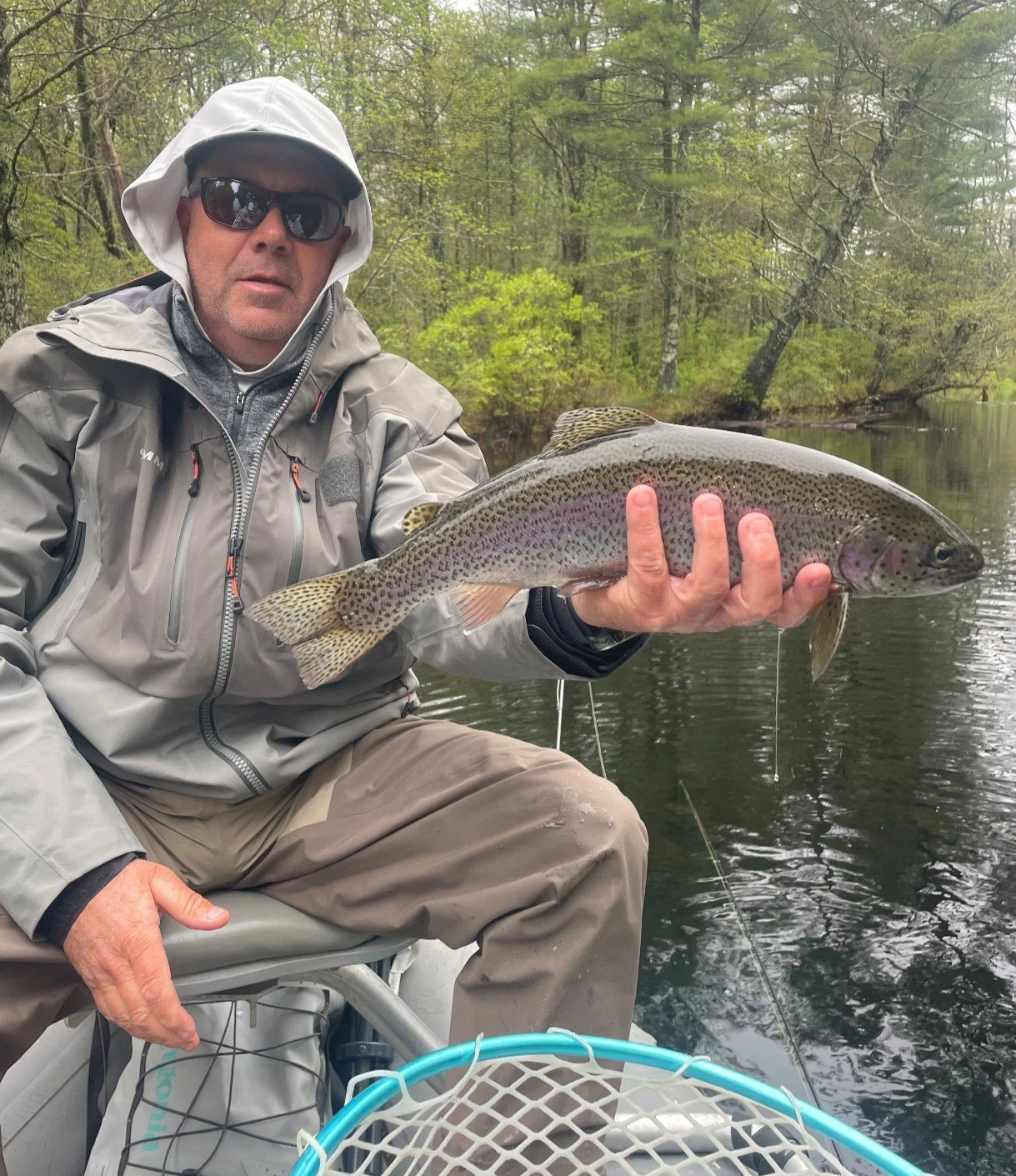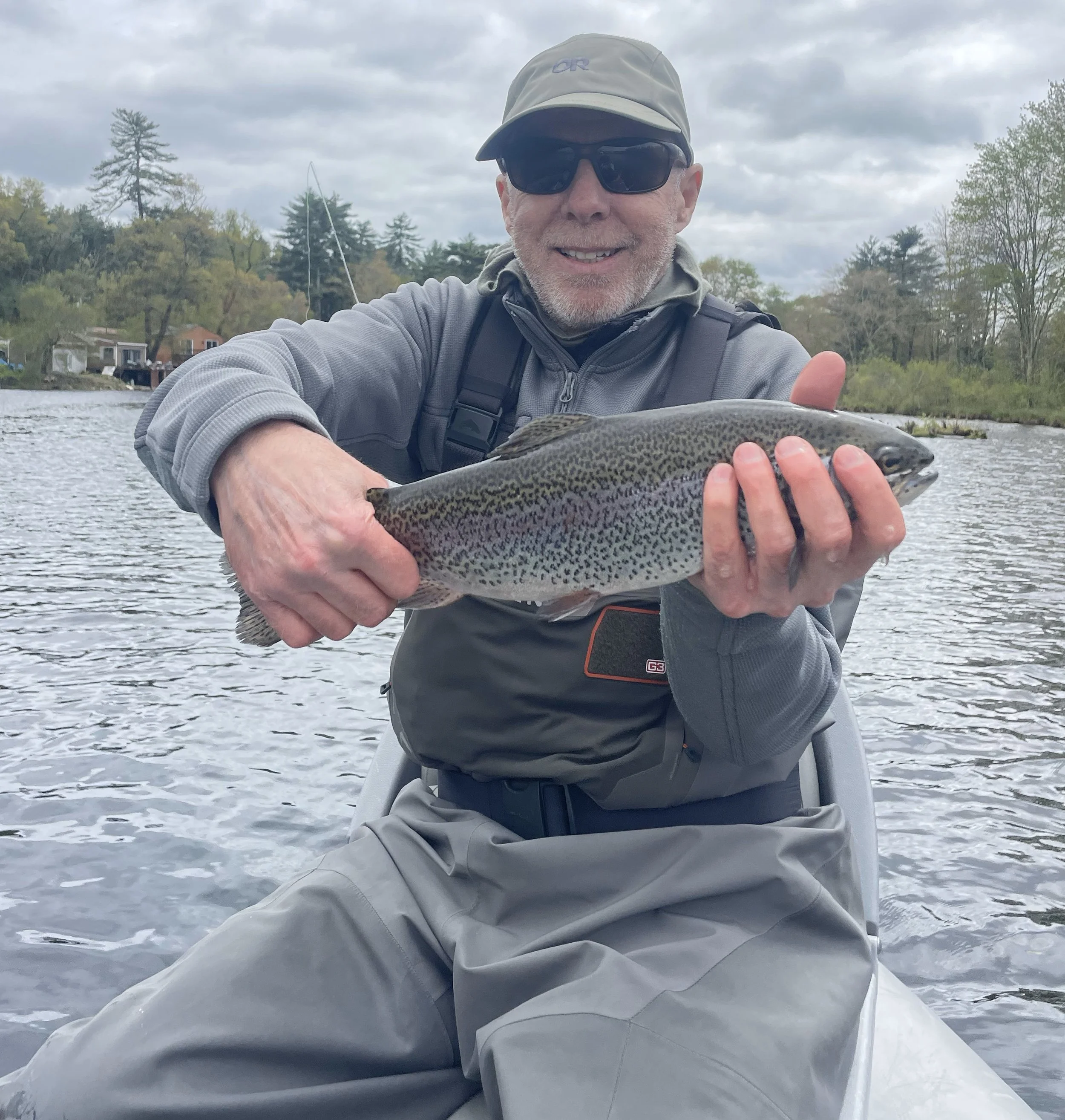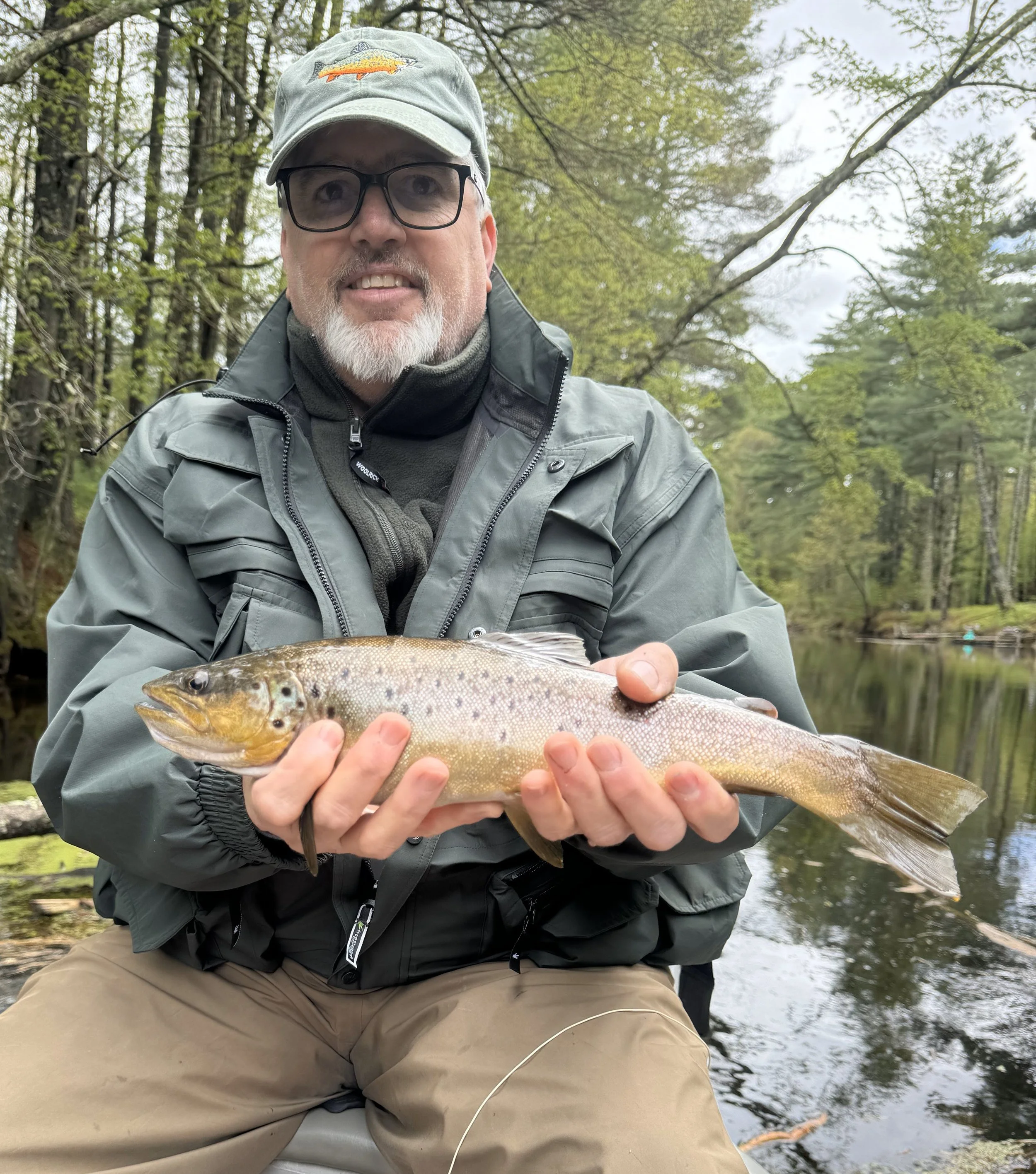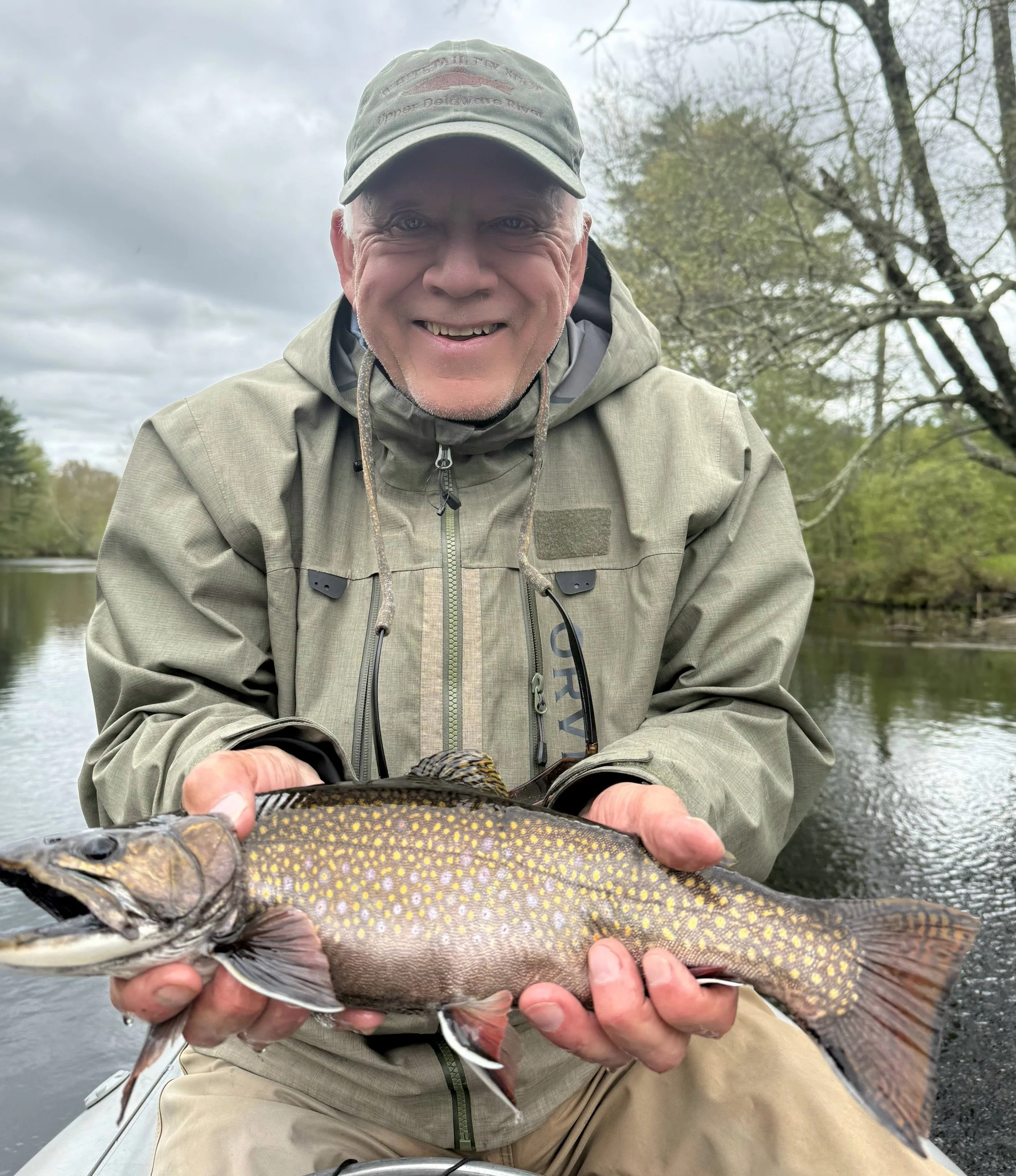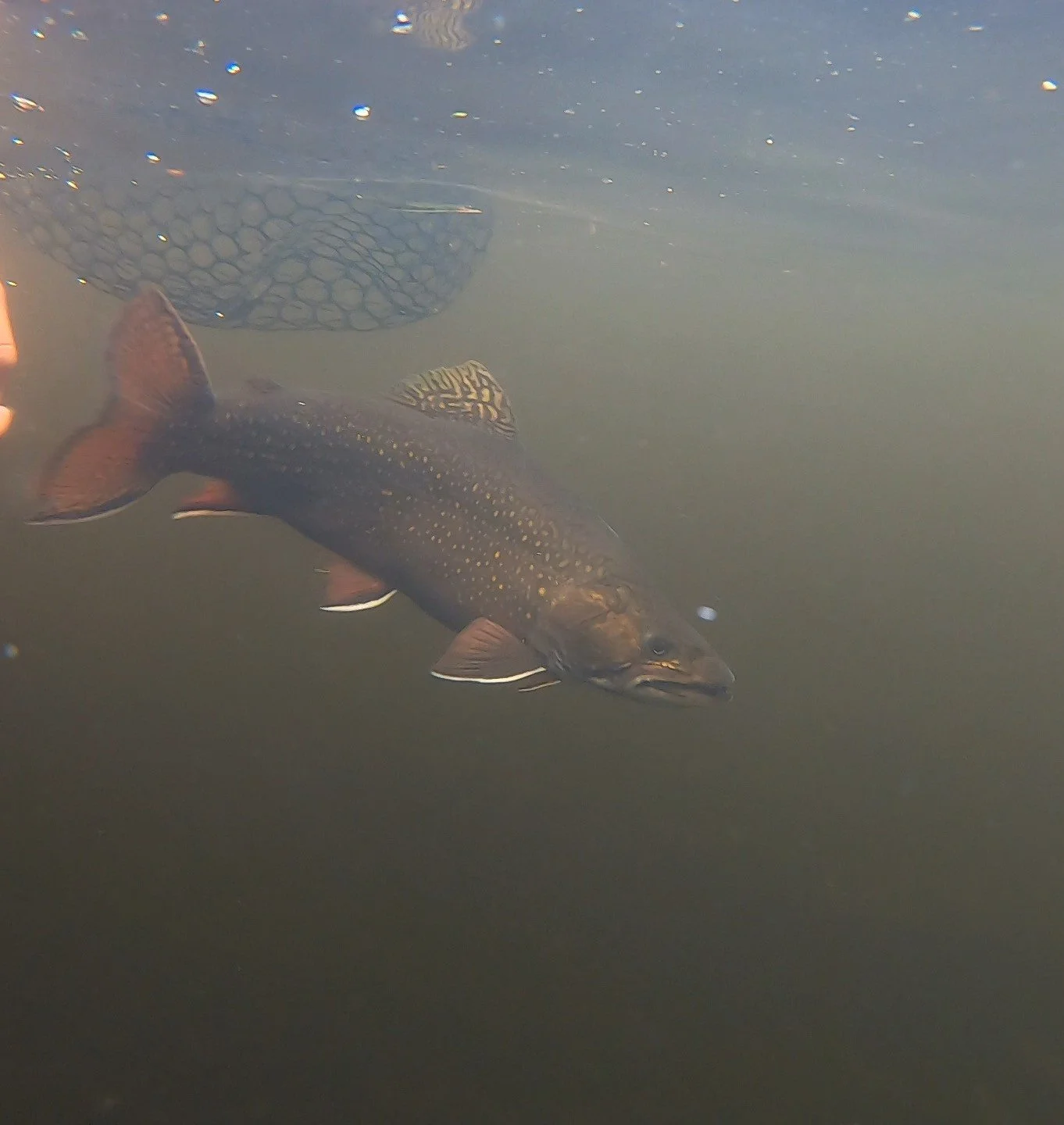swift river: a fly fisher’s paradise
Crystal clear water at Swift River
I woke at sunrise on May 9th to rainfall pattering against my bedroom window. Checking the weather radar confirmed my fears: the entire Southern and Western New England region could expect constant precipitation for the next 36 hours. It’s a huge letdown for any outdoor activity, especially one that included grilling dinner and sleeping streamside in a tent after a day of fly fishing. However, like most challenges life throws at you, you make the best of the situation. The gloomy skies only strengthened my determination to help our members and friends catch some of the most impressive trout in New England.
After meeting a fellow member, we drove west to Belchertown, where the Swift River flows from the bottom of the Quabbin Reservoir. With an average flow rate of 50 CFS, the crystal clear water of the Swift maintains steady temperatures in the low 40s to high 50s year-round, creating an ideal habitat for brook, brown, and rainbow trout. Around 9 AM, Mother Nature granted a brief respite from the rain, and the four of us began fishing spots where I’d previously had success. A few fish rose, a few rocks were flipped, and fellow anglers revealed that small Blue-Winged Olives (BWOs) were noted. After experimenting, my friend finally hooked a fish. Two minutes later, a beautiful wild rainbow trout was in his net, caught on a mop fly. A few casts later, he switched to a gray CDC midge, and another trout slurped his fly beneath the surface. The rain intensified just as the second fish was released so we broke for lunch.
Despite the steady rain, we fished for a few hours after lunch with no success. I accepted the fact that fishing on this day would end with a “skunk” for me, but I learned some valuable lessons about the various fly options that could be utilized to attract hungry fish. It was now time to make alternative arrangements for the transition to the Deerfield River float with the Harrison Anglers the following day. Instead of camping streamside we opted for a motel room close to our anticipated launch site 45 minutes to the north on the Deerfield River.
The following morning, emotions and expectations soared as our group anticipated floating the mighty Deerfield River—and mighty it was that day. About an hour before our meetup with our guides, Mother Nature threw another curveball: a dreaded text message from the Harrison Anglers informed us the river was flowing at over four times its normal rate so the the float trip would be on the Swift. So, back to the Swift we went—and I’m glad we did.
As the morning rain cleared into an overcast day, our three boats spread out and almost immediately began catching fish. Our knowledgeable guides adjusted the depth of our indicators and shared tips for perfect casts and presentations. All morning, various nymphs, leaches, and egg patterns landed fish. For some of us who had limited or no experience with nymphing, relying purely on vision to detect the slightest change in an indicator presented us with a new challenge. In saltwater we depend on both visual and haptic feedback to to set the hook. Trout fishing is different - an average 16- to 20-inch trout is far more cautious, often giving food a small nibble to test if it’s real. Nevertheless, fish were active and provided opportunities to catch some nice fish.
Thankfully, in the afternoon, patches of blue sky and warm spring sun triggered one of the most beautiful mayfly hatches I’ve ever seen. Within minutes, a swarm of swallows and chimney swifts feasted on actively hatching mayflies, and the trout weren’t far behind. Our guide Jake selected a perfectly matching Hendrickson dry fly. On the first cast, Joe got a massive visual and haptic cue to set the hook. A few minutes later, a personal-best wild brook trout was in the net, the Hendrickson fly lodged in the side of its mouth.
Despite frustrations from weather, missed bites, and lack of sleep, I returned home with far more knowledge about wild trout than two days prior. My casting improved, my bug selection sharpened, and most importantly, all my friends caught multiple fish. A successful trip isn’t always about landing a dozen fish—it’s about expanding your knowledge, even a little, and enjoying the outdoors with good company.


